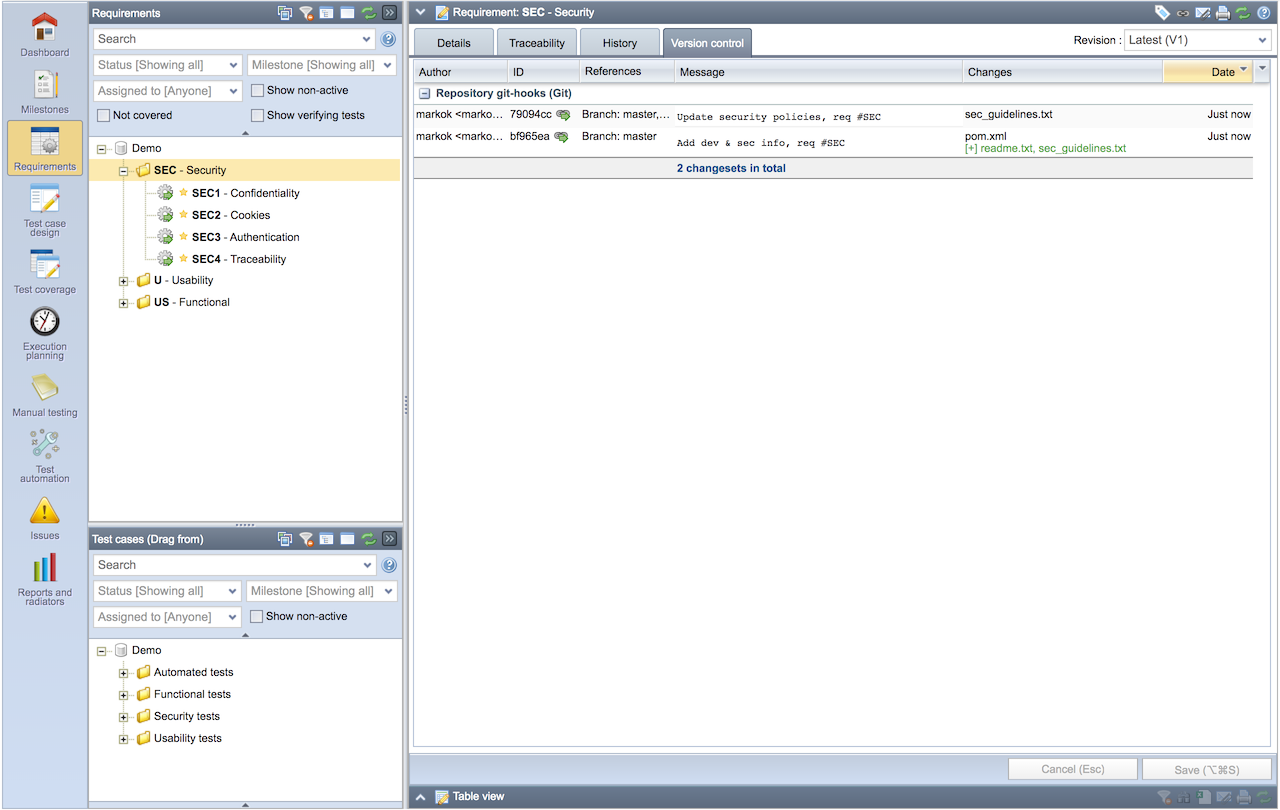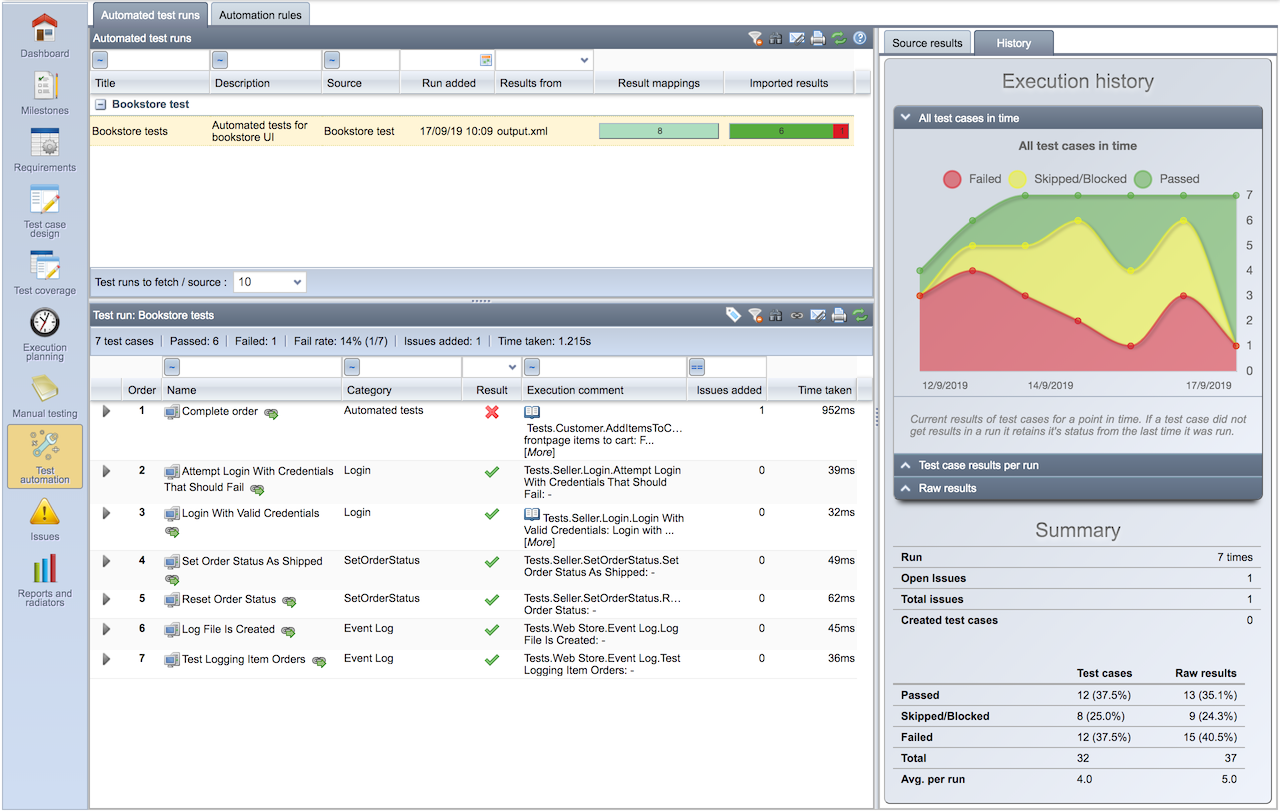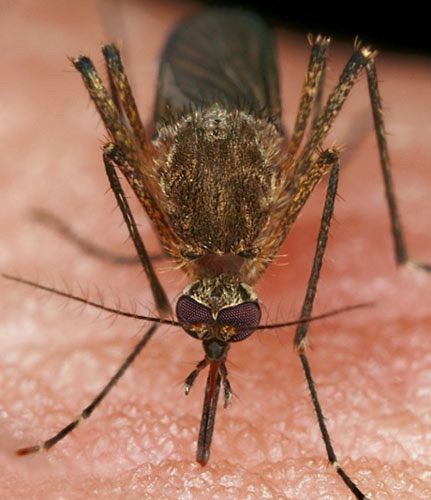We are proud to announce Meliora Testlab – Oscar Bug – with long-awaited VCS integrations. This release also enhances the test automation related features introduced in Testlab – Automaton. Read on for more information on new features in this release.
Git and Mercurial VCS integration
 VCS integration allows you to track and link changesets in your Version Control System (Git or Mercurial) to (assets in) your Testlab project. This enables better DevOps workflows and brings visibility to your testing efforts via source code changes.
VCS integration allows you to track and link changesets in your Version Control System (Git or Mercurial) to (assets in) your Testlab project. This enables better DevOps workflows and brings visibility to your testing efforts via source code changes.
- The VCS changesets can be tracked in Testlab’s requirement editing views, issue editing views and via a VCS specific Dashboard widget provided.
- A new field “Latest commit” has been added for requirements and issues and if enabled, can be used to track the latest commit related to the requirement and/or issue.
A VCS integration is set up via hook scripts supported by the chosen VCS tools. You can read more about setting up the integration from the appropriate documentation (Git, Mercurial).
Reference and act on assets via commit messages
 When a changeset is committed to the version control system, the committer provides a message to describe the content of the commit. When the VCS system is integrated with a Testlab project, the commit message may be included with specially crafted commands to
When a changeset is committed to the version control system, the committer provides a message to describe the content of the commit. When the VCS system is integrated with a Testlab project, the commit message may be included with specially crafted commands to
- link the changeset to requirements and/or issues and
- resolve or close issues.
Also, a new notice scheme event type “Version control commit” has been added to Testlab. This enables you to react when a changeset has been linked to an asset.
Link failures from Jenkins to VCS changesets
 With Oscar Bug, a new version of Jenkins’s plugin is released. This version includes support for passing built commit ID with the test results pushed. This way, when an issue is added for the failed build, the issue
With Oscar Bug, a new version of Jenkins’s plugin is released. This version includes support for passing built commit ID with the test results pushed. This way, when an issue is added for the failed build, the issue
- gets linked with the changeset the Jenkins job was building and
- possible culprits reported by Jenkins are included in the issue description.
Automated test run history
 A new history panel has been added to present the history of execution results. This pane can be found on the “Automated test runs” tab in “Test automation” view. The pane shows three different time-based graphs to inspect how the mapped test cases have passed and how the raw results have passed. In addition, the pane holds various calculated statistics for the run.
A new history panel has been added to present the history of execution results. This pane can be found on the “Automated test runs” tab in “Test automation” view. The pane shows three different time-based graphs to inspect how the mapped test cases have passed and how the raw results have passed. In addition, the pane holds various calculated statistics for the run.
Please keep in mind that to inspect the result history of a run, the run must have multiple execution results available. For this to happen, you should push multiple results to the same run with the matching title, milestone, version, and source.
More new features in Testlab’s UI
In addition to the above, the following changes have been made to various views:
- Report generation has been enhanced with queuing and caching improvements. This means, that when requesting the same report which is fresh enough (newer than 12 hours), the user is immediately served this report with no delay. The user has an option to request the refresh for the report if a fresh one is needed.
- On “Test coverage” view, you now have an option to filter in manual or automated tests only.
- When copying test cases via test case tree with “Paste special…”, you have an option to copy test cases as a specific type (as manual or as an automated test case).
- On Dashboards
- “Current test cases” widget, automated test cases are shown as a separate group,
- “Latest test runs” widget, you can now configure the widget to show manual and/or automated test runs only,
- “Milestone summary” widget, the number of automated tests is shown if milestone holds any.
Changes to reporting
The following changes have been implemented to the reporting features:
- “Requirement coverage” report features a field selector to choose reported test case fields. Also, the type of test case (manual/automated) has been added as a supported filter.
- “Results of run tests” report features a field selector to choose reported test case fields. As such, the checkbox option to include test case steps to the report has been removed due to the fact that steps of the test case are now as a choosable field in the field selector.
- “Risk analysis” report features a field selector to choose reported test case fields. In addition, the type of the test case can be used as a filter which has an effect for included test cases and for interpreted results of requirements.
- “List of test cases” report now includes a “Latest execution status” filter. When chosen, the report will list all test cases whose latest execution result matches the filter.
- “Testing progress for requirements” includes a “Test case type” filter (manual/automated).
- A “Latest commit” field (related to the new VCS integration support) has been added as a reportable field on applicable reports: Issue & requirement listing and grouping reports.
- A “Version control” field has been added as a reportable field on “List of issues” and “List of requirements” reports.
Thanking you for all your feedback,
Meliora team

The Oscar Bug is a member of the species Culiseta longiareolata, and appears under direct observation as a normal specimen of that species.
When a female bug bites a mammal, the affected person or animal begins a physical transformation lasting several days. First, the subject loses consciousness and enters a comatose state. Then, beginning at the site of the bite, the tissues of the victim begin to change, starting with the dermis and progressing inward toward muscular and skeletal structures. All subjects take on the same physical appearance and attribute: that of a Caucasian human male named Oscar Peleschak, age 57.
(Source: scp-wiki, picture of the specimen from the same site)

